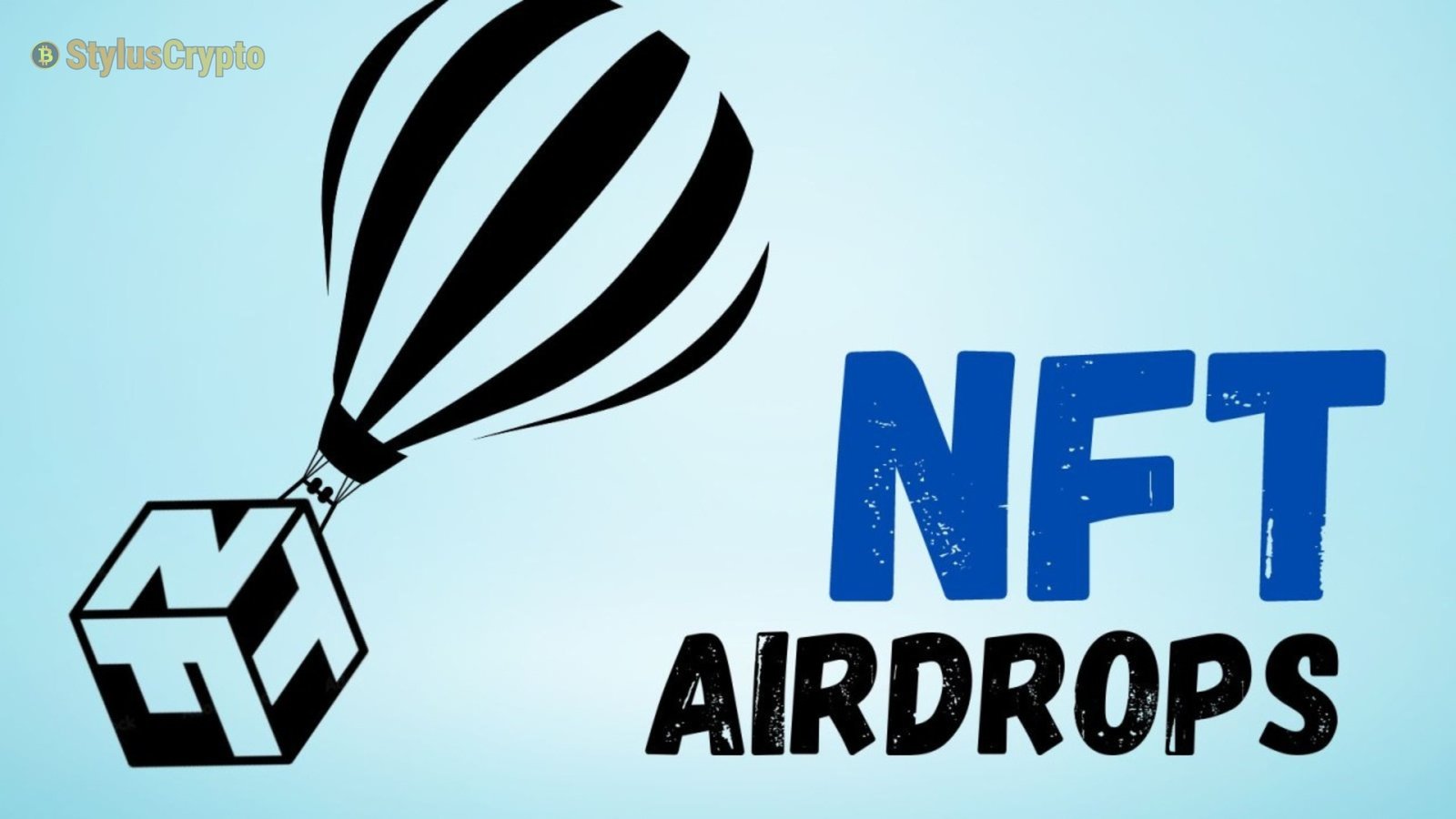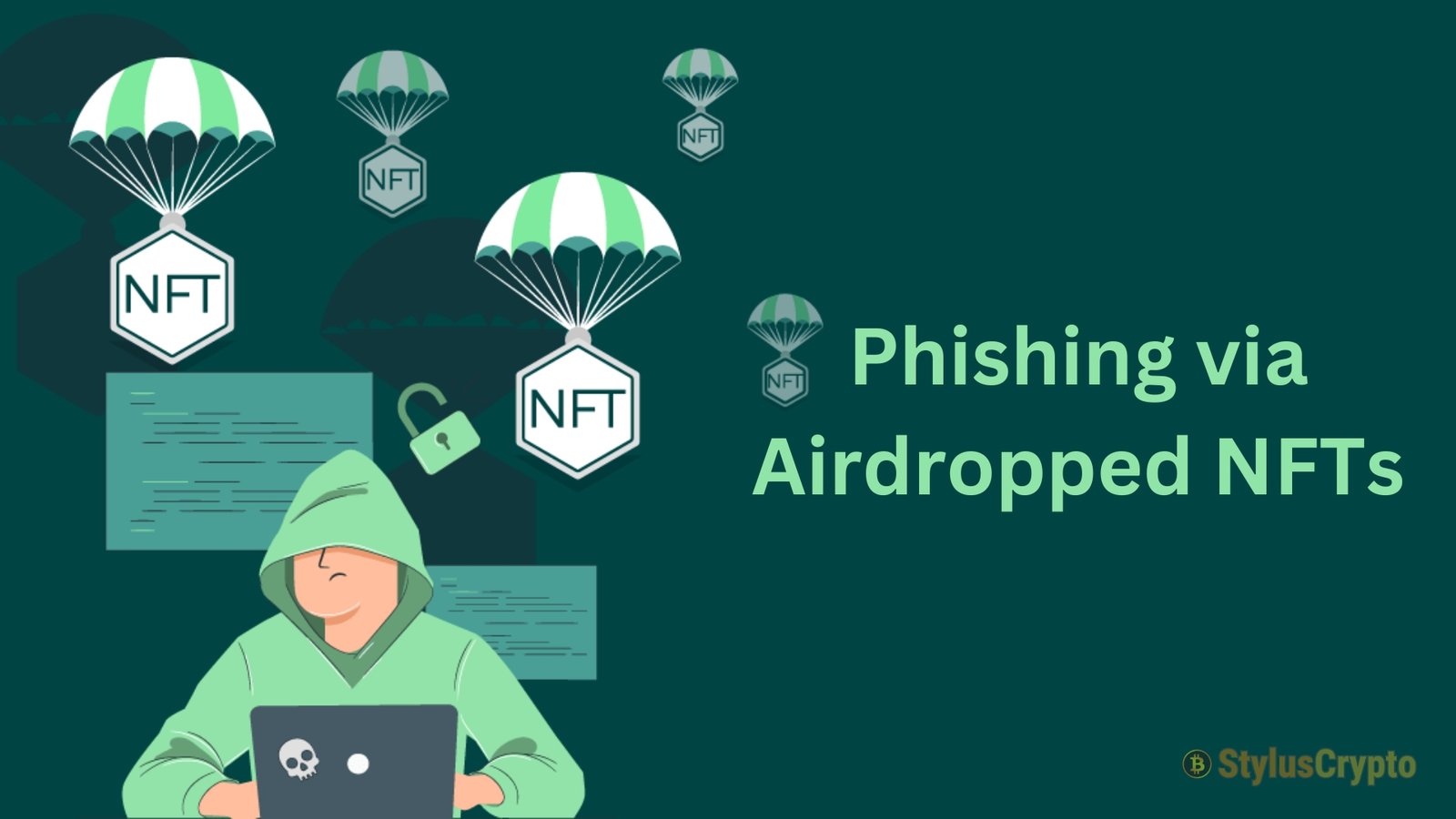NFT Airdrop Scams: Many people are putting their money and energy into non-fungible tokens (NFTs) because of how exciting blockchain technology is. NFTs are one-of-a-kind digital assets, which can be anything from virtual real estate to works of art, collectibles, or music. However, the number and variety of scams aimed at naive investors have grown in tandem with the NFT sector. The NFT airdrop scam is one example of a recently popular con. This essay will explain what NFT airdrop scams are, how they operate, and how you can avoid falling for one.
What Are NFT Airdrops?
Before you fall for the hoax, you should know what an accurate NFT airdrop is. Blockchain initiatives often employ airdrops to disperse tokens or NFTs to a massive user base. This is a common tactic to promote a new project and get more people to use it. Free NFTs could be “airdropped” by a new NFT project to anyone who uses a particular cryptocurrency or is active in the project’s community.
Most people think of airdrops as a method to reward people who get into a project early on and get people talking about it. A specific token in one’s wallet is often all needed to get these airdrops. Scammers have found airdrops to be a lucrative opportunity due to the increasing popularity of NFTs.
How NFT Airdrop Scams Work
In NFT airdrop scams, criminals pose as legitimate organizers to trick naive consumers into transferring fake NFTs. There are often a few standard stages to the fraud:
- Creation of Fake NFTs or Projects: Scammers create a fake NFT project or replicate an existing legitimate one. They may set up convincing websites, social media profiles, and even smart contracts to lend credibility to their scam.
- Targeting Users: The scammers identify potential victims, often by targeting users who hold specific cryptocurrencies or NFTs in their wallets. They might use blockchain explorers or social media platforms to find these users.
- Airdrop Execution: Once the targets are identified, the scammers airdrop the fake NFTs to the victims’ wallets. The victims receive a notification that they’ve been sent an NFT, usually accompanied by a message encouraging them to visit a website or interact with the NFT in some way.
- Phishing Links or Malicious Smart Contracts: The airdropped NFTs often have a link or prompt to claim the “full” NFT or “unlock” additional features. These links typically lead to phishing websites that steal private keys or prompt users to interact with malicious smart contracts. Once a user interacts with these contracts, they might unknowingly grant the scammer access to their wallet, allowing the scammer to steal their assets.
- Exploitation and Theft: If the victim falls for the scam and interacts with the malicious contract or website, the scammer can gain control of their wallet and steal any valuable assets, including cryptocurrencies and other NFTs.
Examples of NFT Airdrop Scams
There has to be more watchfulness in the space due to the recent emergence of multiple high-profile incidents of NFT airdrop scams.
Fake Airdrop Announcements
Scammers have sometimes impersonated well-known NFT projects on social media, announcing fake airdrops to lure victims. They create urgency by claiming that the airdrop is limited to the first few participants, prompting users to act quickly without verifying the legitimacy of the offer.
Phishing via Airdropped NFTs
In another case, users have reported receiving NFTs that, when clicked, direct them to a phishing site. These sites are often well-crafted, mimicking legitimate NFT marketplaces or wallet interfaces and tricking users into entering their private keys or seed phrases.
Malicious Smart Contracts
Some scams involve airdropping NFTs that are actually malicious smart contracts. When a user interacts with the NFT, such as trying to sell or transfer it, they inadvertently authorize a transaction that grants the scammer access to their wallet.
How to Protect Yourself
The level of sophistication of NFT airdrop scams is increasing; thus, consumers must be proactive in protecting themselves. As an example, consider the following:
- Be Skeptical of Unsolicited Airdrops: If you receive an NFT that you weren’t expecting, be cautious. Scammers often target users by sending unsolicited airdrops. If you don’t recognize the project or the sender, ignoring the NFT and avoiding interacting with it is best.
- Verify the Source: Always verify the legitimacy of an airdrop before interacting with it. Check the official channels of the project, such as their website, Twitter, or Discord, to confirm whether the airdrop is genuine. Be wary of airdrop announcements that only appear on unofficial or unverified accounts.
- Avoid Clicking on Links: If an airdropped NFT comes with a link or prompt, avoid clicking on it until you can verify its legitimacy. Scammers often use links to direct victims to phishing sites or malicious smart contracts.
- Use Wallets with Limited Permissions: Consider using a wallet with limited permissions to receive airdrops. Some wallets allow you to receive and store NFTs without granting full access to your main wallet. This can act as a buffer, protecting your main assets from scams.
- Educate Yourself and Stay Updated: The NFT space is constantly evolving, and so are the tactics used by scammers. Stay informed about the latest scams and security practices by following trusted blockchain and NFT community sources.
- Report Suspicious Activity: If you encounter a suspicious airdrop or believe a scam has targeted you, report it to the community and the relevant platforms. Raising awareness can help prevent others from falling victim to similar schemes.
The Role of Platforms and Developers
While individual vigilance is crucial, the broader NFT ecosystem also plays a role in combating airdrop scams. Platforms, developers, and marketplaces can implement several measures to enhance security:
- Improved Wallet Security Features: Wallet developers can introduce features that allow users to filter or block airdrops from unknown sources. Additionally, implementing stricter verification processes for smart contracts can reduce the risk of executing malicious contracts.
- Educational Initiatives: NFT platforms and communities can launch educational campaigns to inform users about the risks associated with airdrops and how to protect themselves. Providing clear guidelines and resources can empower users to make informed decisions.
- Collaborative Efforts to Identify Scams: The NFT community can benefit from collaborative efforts to identify and report scams. Platforms can partner with cybersecurity firms and blockchain analysts to monitor and flag suspicious activity in real time.
- Transparency in Airdrop Processes: Legitimate projects should strive for transparency in their airdrop processes. Communicating the criteria, timeline, and distribution method can help users distinguish between genuine airdrops and potential scams.
Conclusion
Taking advantage of the enthusiasm and fast expansion of the NFT market, NFT airdrop frauds are becoming an increasingly severe problem in the blockchain industry. Users must stay alert and educated since these scams are getting increasingly complex. Individuals and the larger NFT community can do their part to reduce vulnerability and create a more secure space for innovation and creativity by learning about these scams and implementing security best practices.
Remember that in NFTs and blockchain, being skeptical, verifying information, and educating yourself are the most significant ways to protect yourself from scams. In the dynamic Safeguarding, your assets in the digital landscape safeguard knowledge and caution.

